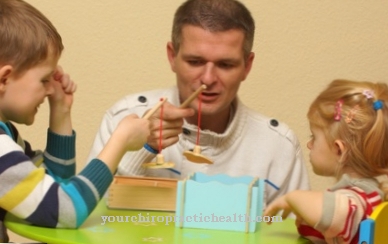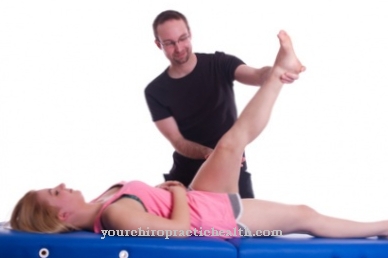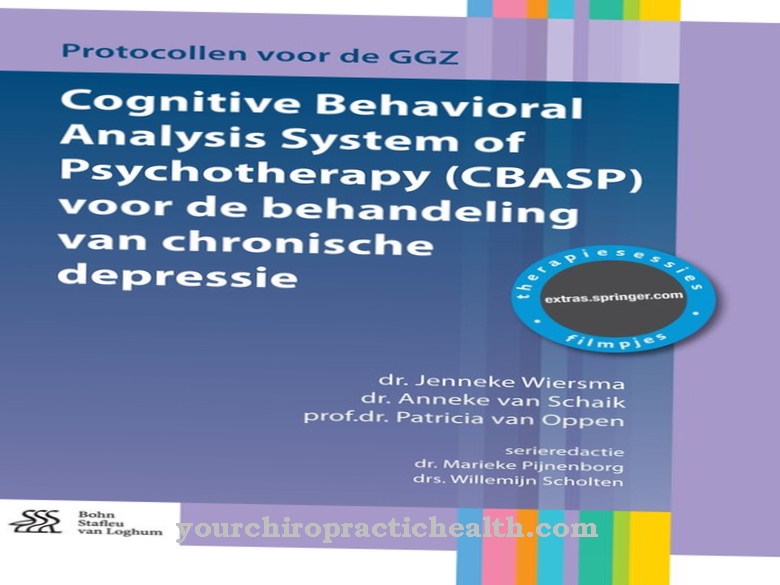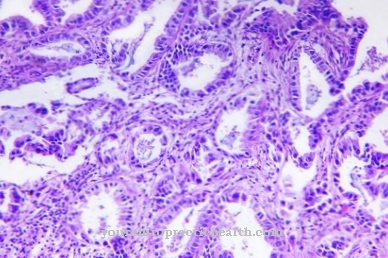A Association serves as a wound protection against infection and can stop light bleeding. It shields fresh wounds from the outside and, depending on the type of dressing, takes on other tasks in the healing of wounds and other injuries.
What is an association?

Dressings are applied externally to various injuries as wound protection. It is a germ-free substance that takes on many functions depending on the type of injury. The simplest dressings are for open wounds. They are used after injuries or after operations to shield open or healing wounds from germs and to allow them to heal in a protected space.
One possible form of this is pressure bandages that are applied to freshly bleeding wounds to stop bleeding more quickly. The bandage also makes it possible, for example, to shower after operations if it is waterproof. Bandages can also support and stabilize and immobilize limbs. It is then no longer the classic wound dressing, but rather dressings in combination with a splint.
The bandage forms the outer layer of the construct and protects the splint and the affected body part from external dirt, as splints and similar applications usually have to be worn for a long time. A bandage is often made of gauze, but it can also be made of other materials - depending on the intended use.
Function & effect
There are many uses for bandages, from small wounds to stabilizing broken bones. The simplest dressings are used in wound treatment. Small, closed, but fresh wounds can be bandaged on a daily basis to protect them from germs. For the application of ointments, which are gradually absorbed, bandages are used on wounds and joints, which are then removed again.
Wounds that have just been sewn, for example due to injury or surgery, also remain bandaged for a few days to ensure sterile healing. Fresh wounds can be treated with pressure bandages to stop bleeding or contain it until the injury can be stitched in the hospital. The pressure bandage is a common first aid tool in traffic accidents.
Complex dressings are used for sprains, fractures, diseases of the joints, and other conditions in which a joint must be immobilized or splinted. The splint is used for weeks and without the bandage as protection would either interfere or become soiled over time. The bandage is a protective cover to the outside and prevents both. It also makes it possible to cope with everyday life relatively normally during the period of wearing, since such bandages are often waterproof and can therefore also be showered with them if they are not directly exposed to the water.
Bandages are sometimes also worn in sports to support certain parts of the body and prevent sports injuries. Similar support bandages are prescribed to stabilize bones, joints and muscles. Back problems such as a herniated disc or overstretching of the back muscles due to pregnancy, incorrect posture or dislocations during sport are common applications.
Bandages are also used to soak in long-acting ointments. Some ointments have to be absorbed into the skin for hours and release their active ingredient in a controlled manner over a longer period of time. However, since this can be impractical for everyday life, the affected area is connected with a gauze bandage that is tight to the outside. The bandage ensures that the ointment can stay on the skin overnight or for hours during the day and does not bother.
Risks
Associations are comparatively harmless and do not pose any great risks. However, the longer they are worn, the more likely they will become soiled or deformed over time, which is why the treating doctor should keep an eye on them.
Dressings are usually only worn on a daily basis. Depending on the severity of the wound, they must be changed in the meantime. Open, oozing wounds, which may still have impaired wound healing and therefore do not heal for a long time, are particularly difficult. With them it can happen that the dressing dries up in the wound fluid and then has to be removed again - but this can be prevented by changing it frequently. Wound dressings must be sterile, as they lie directly on the wound for days and germs have the best living conditions. Dressings applied in the hospital are certainly sterile.
One should be careful with pressure bandages and bandages that were applied at home, as it is possible that individual germs creep in through the environment in which the bandage was applied.
Bandages that stabilize a splint can become soiled or cause pressure points if they are worn for a long time. Padding the splint with cotton wool or replacing it if the pressure points do not improve can be a good solution. In the worst case, heavily soiled dressings have to be changed because they pose a hygienic risk. With very stable bandages, there can of course also be restrictions on motor skills and thus in independence in everyday life. Bandages on the extremities in particular often mean that the wearer can no longer write, walk without aids or get dressed alone. However, the restrictions imposed by stable associations are short-lived.













.jpg)

.jpg)
.jpg)











.jpg)